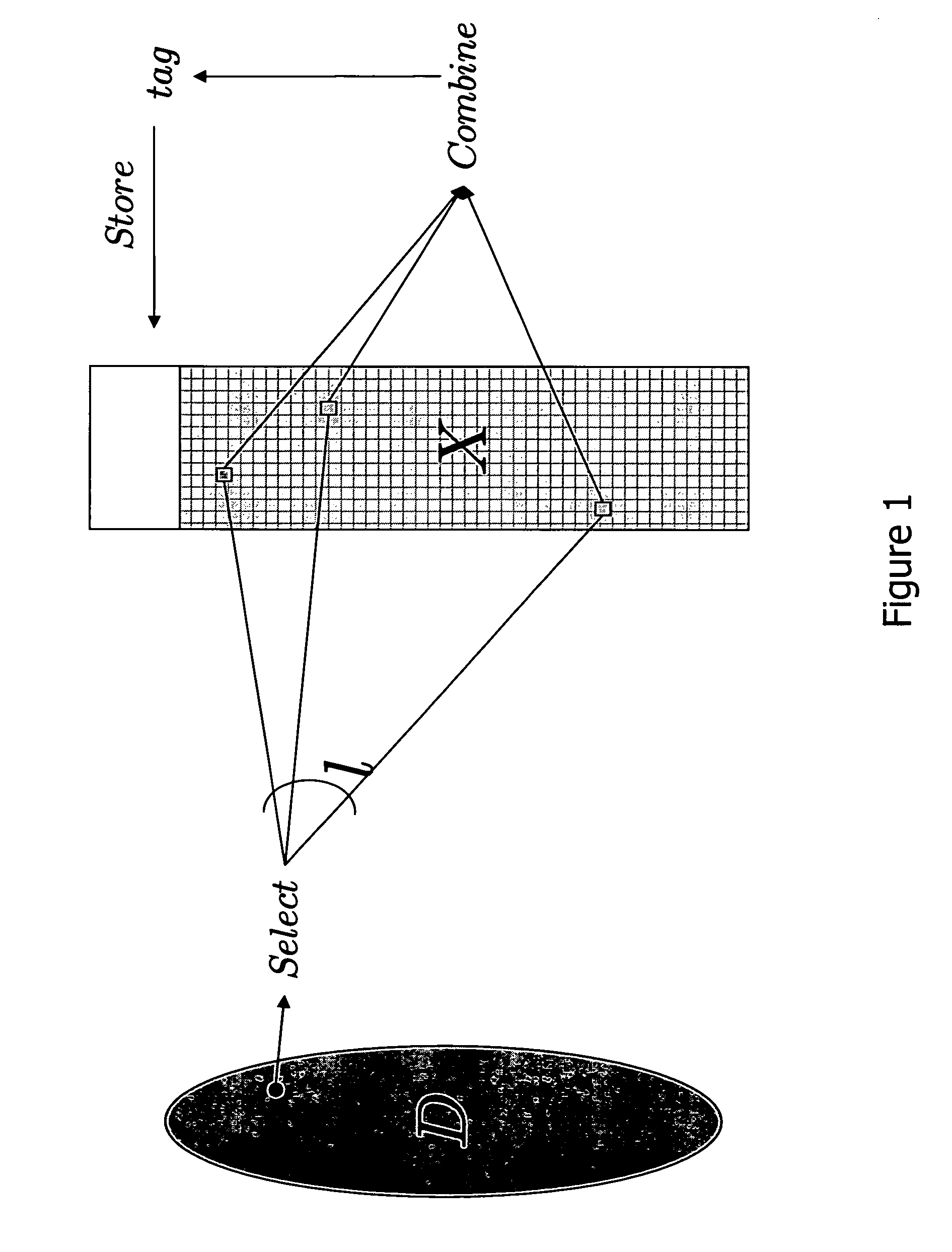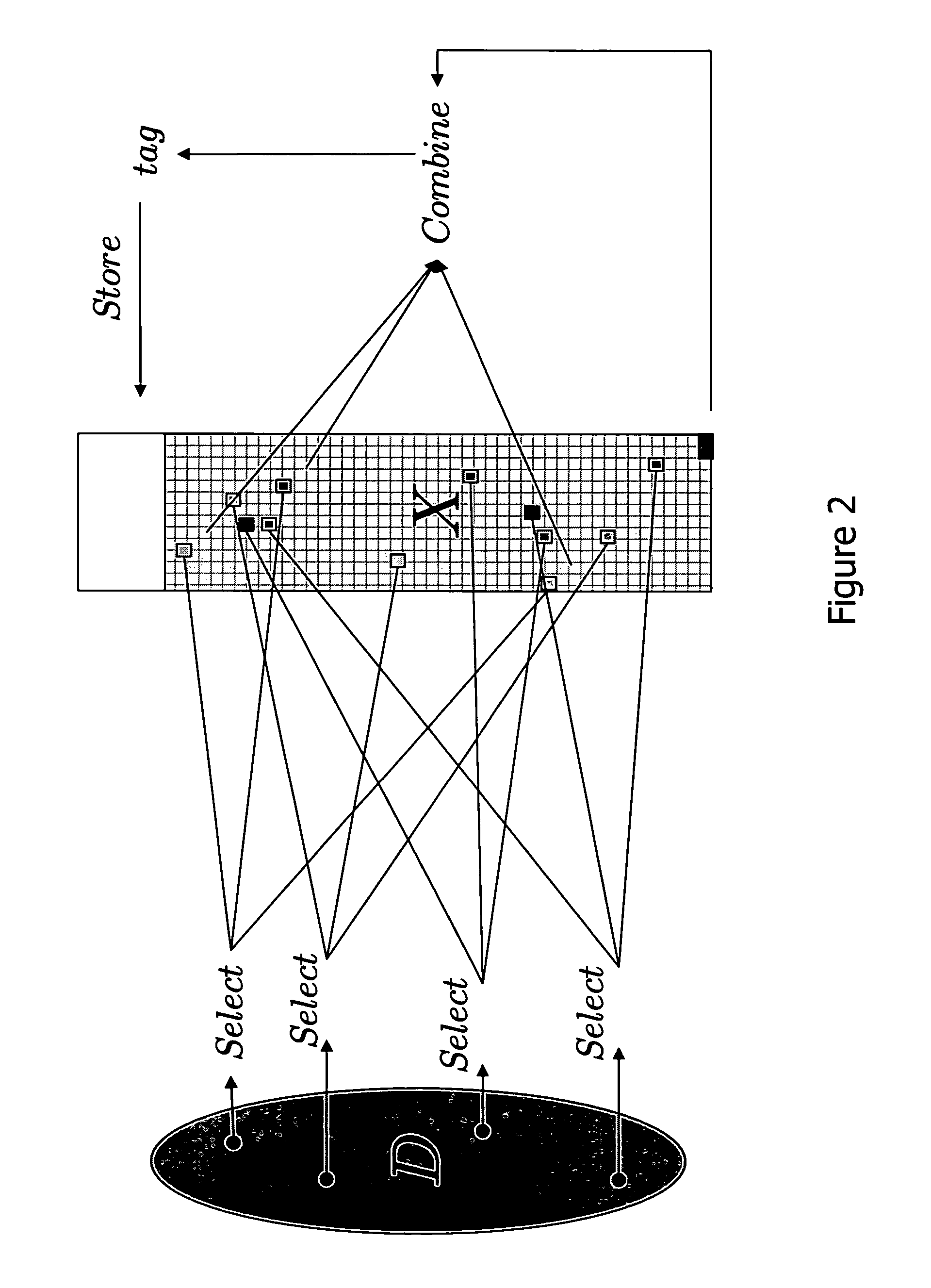Method and system for password protocols in the bounded retrieval mode with security dictionary attacks and intrusions
a password protocol and password technology, applied in the field of password protocols in the bounded retrieval mode with security dictionary attacks and intrusions, can solve the problems of affecting the security of password databases, and requiring a large amount of external bandwidth, so as to achieve efficient computable, easy to recover, and easy to invert.
- Summary
- Abstract
- Description
- Claims
- Application Information
AI Technical Summary
Benefits of technology
Problems solved by technology
Method used
Image
Examples
Embodiment Construction
[0023]Password database files are created that are so large that either (1) they cannot be retrieved in their entirety by a local or remote intruder in any reasonable time due to access or bandwidth limitations, or (2) any such huge retrieval operation is easily detected. Detection of a huge retrieval operation can be obtained using very simple and efficient intrusion detection mechanisms. See, e.g., S. Axelsson, Research in Intrusion-Detection systems: A Survey, in Technical Report 98-17, Dept. of Comp. Eng., Chalmers, Univ. of Technology, Goteborg, Sweden, 1998, at http: / / citeseer.ist.psu.edu / axelsson98research.html for a survey and G. Di Crescenzo, A. Ghosh, and R. Talpade, Towards a Theory of Intrusion Detection. in Proc. of European Symposium on Research in computer Security (ESORICS 2005), vol. 3679 of LNCS, pp. 267-286, Springer-Verlag, for a theoretical model of intrusion detection. Specifically, a huge retrieval would be considered an anomalous event, thus triggering action...
PUM
 Login to View More
Login to View More Abstract
Description
Claims
Application Information
 Login to View More
Login to View More - R&D
- Intellectual Property
- Life Sciences
- Materials
- Tech Scout
- Unparalleled Data Quality
- Higher Quality Content
- 60% Fewer Hallucinations
Browse by: Latest US Patents, China's latest patents, Technical Efficacy Thesaurus, Application Domain, Technology Topic, Popular Technical Reports.
© 2025 PatSnap. All rights reserved.Legal|Privacy policy|Modern Slavery Act Transparency Statement|Sitemap|About US| Contact US: help@patsnap.com



